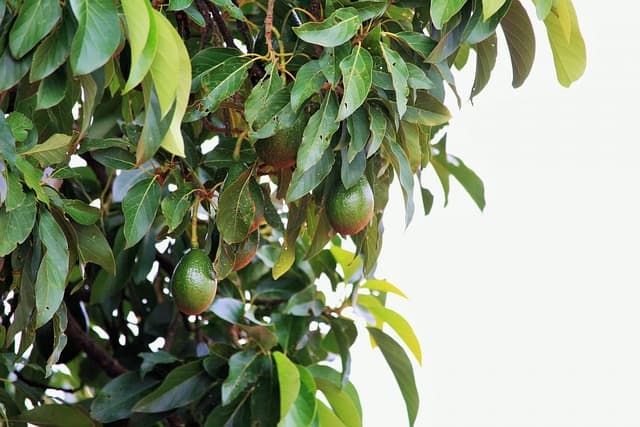Avocado trees are a popular choice for home gardeners and commercial growers alike, thanks to the delicious and nutritious fruits they produce. However, these trees are not without their challenges. One issue that avocado growers may encounter is the development of black spots on the leaves of their trees.
Black spots on avocado leaves can be caused by a variety of factors, including fungal infections, bacterial infections, and insect damage. These spots can range in size from small, pinprick-sized dots to large, irregular patches.
While black spots on avocado leaves may not always be a cause for concern, they can be a sign of a more serious problem, such as a disease that can impact the overall health of the tree and its fruit.
Understanding the causes and symptoms of black spots on avocado leaves is important for growers who want to ensure the health and productivity of their trees. By taking steps to prevent and treat these spots, growers can help to protect their avocado trees and the fruits they produce.
Key Takeaways
- Black spots on avocado leaves can be caused by a variety of factors, including fungal infections, bacterial infections, and insect damage.
- These spots can be a sign of a more serious problem, such as a disease that can impact the overall health of the tree and its fruit.
- Understanding the causes and symptoms of black spots on avocado leaves is important for growers who want to ensure the health and productivity of their trees.
See these other popular posts in this category:
Understanding Avocado Leaves
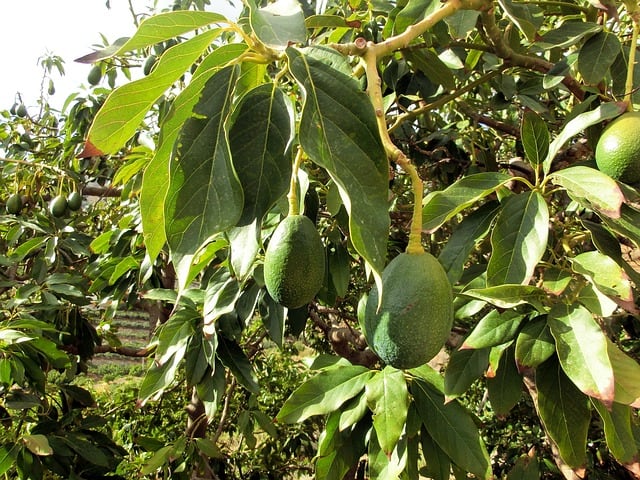
Avocado leaves are a vital part of the avocado tree. They are responsible for absorbing sunlight, which is essential for photosynthesis, and they also help to regulate the tree’s temperature. Avocado leaves are usually large, dark green, and glossy, with a leathery texture. They can grow up to 30 centimeters long and 15 centimeters wide.
The leaves of an avocado tree are arranged alternately on the stem. They are attached to the stem by a petiole, which is a thin stalk that connects the leaf to the stem. The petiole is usually about 2-4 centimeters long. The leaf blade is the flat part of the leaf that is responsible for absorbing sunlight. It is attached to the petiole by a midrib, which is a thick vein that runs down the center of the leaf.
Avocado leaves are susceptible to a variety of diseases and pests. One of the most common problems that affect avocado leaves is black spots. Black spots on avocado leaves can be caused by a variety of factors, including fungal infections, bacterial infections, and environmental factors such as sunburn or frost damage.
Symptoms of black spots on avocado leaves include small, dark spots on the leaves that gradually increase in size. The spots can merge together, causing large areas of the leaf to turn black. In severe cases, the entire leaf can turn black and fall off the tree.
To prevent black spots on avocado leaves, it is important to maintain good tree health. This can be achieved by providing the tree with adequate water, nutrients, and sunlight. It is also important to monitor the tree for signs of disease or pest infestation and to take appropriate action if necessary.
Recognizing Black Spots on Avocado Leaves
Black spots on avocado leaves can be a sign of a variety of issues, including fungal diseases and pests. It is important to recognize these spots early to prevent further damage to the plant. Here are some tips to help identify black spots on avocado leaves:
- Location: Black spots can appear on both the top and underside of avocado leaves. If the spots are on the underside of the leaf, it may be a sign of a fungal disease.
- Shape and Size: Black spots can vary in size and shape. Some may be small and circular, while others may be irregularly shaped and larger. It is important to note the size and shape of the spots to help identify the issue.
- Color: Black spots can range in color from dark brown to black. If the spots are accompanied by yellowing or discoloration of the leaf, it may be a sign of a fungal disease.
- Texture: The texture of the spots can also provide clues to the issue. If the spots are raised or have a powdery texture, it may be a sign of a fungal disease. If the spots are flat and smooth, it may be a sign of a pest infestation.
If you notice black spots on your avocado leaves, it is important to take action to prevent further damage. This may include removing affected leaves, treating the plant with fungicides or pesticides, and ensuring proper watering and fertilization. By recognizing black spots early and taking action, you can help ensure the health of your avocado plant.
Black Spots on Avocado Leaves – 4 Common Problems
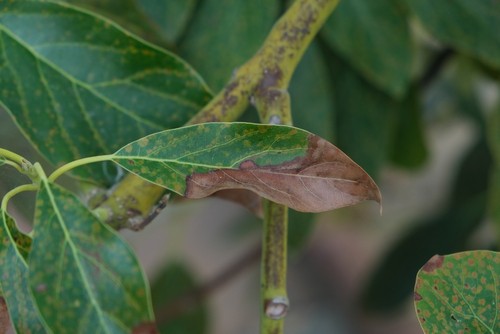
Black spots on avocado leaves can be caused by a variety of factors, including disease, insects, mites, fungus, humidity, wetness, and excess water. The most common cause of black spots on avocado leaves is a fungal disease, such as Cercospora spot or Anthracnose.
1. Pathogenic Fungi
Cercospora spot is caused by the pathogenic fungus Cercospora purpurea. The symptoms of Cercospora spot can include small brown to purple spots on leaves, angular-appearing spots on leaves, small irregular brown spots on fruits, or fissures and cracks in the fruit’s surface.
The disease can be spread by rain, irrigation, or wind-borne spores. It is important to remove infected leaves and fruit to prevent the spread of the disease.
2. Fungal Disease
Anthracnose is another fungal disease that can severely affect avocado trees. It is characterized by brown spots on the leaves and fruit, eventually turning black and falling off the tree. This avocado disease can be caused by either wet or dry types of spores. Wet spores are spread by rain or irrigation, while dry spores are spread by wind.
3. Insects and Mites
In addition to fungal diseases, black spots on avocado leaves can also be caused by insects and mites. These pests can cause damage to the leaves, which can lead to black spots. It is important to identify and control these pests to prevent further damage to the tree.
4. Excess Water and Humidity
Excess water and humidity can also lead to black spots on avocado leaves. Overwatering or poor drainage can cause the roots to become waterlogged, which can lead to fungal growth and black spots on the leaves. It is important to water avocado trees only when necessary and to ensure proper drainage.
Common Diseases in Avocado Trees
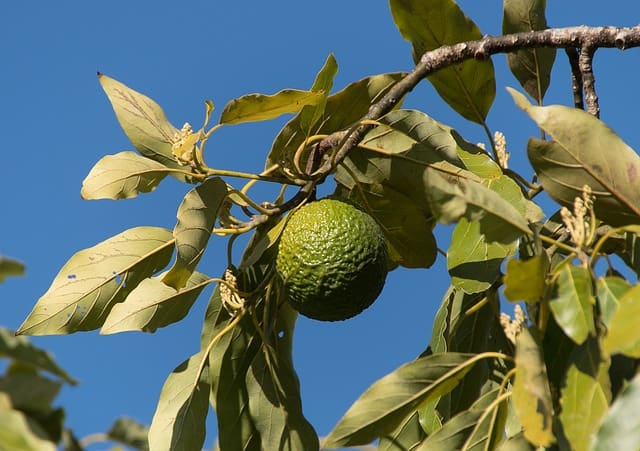
Avocado trees are susceptible to various diseases that can affect their growth and productivity. In this section, we will discuss some of the most common diseases that afflict avocado trees.
1. Anthracnose
Anthracnose is a fungal disease that affects avocado trees, causing dark lesions on the leaves, stems, and fruit. The disease is caused by the fungus Colletotrichum gloeosporioides, which thrives in warm and humid conditions. Anthracnose can cause severe damage to avocado trees, leading to defoliation and reduced fruit yield.
To prevent anthracnose, it is important to maintain good tree hygiene by removing fallen leaves and fruit from the orchard floor. Fungicides can also be used to control the disease, but it is important to follow the manufacturer’s instructions carefully.
2. Algal Leaf Spot
Algal leaf spot is a chronic disease that affects avocado trees, causing small, circular, brown spots on the leaves. The disease is caused by the alga Cephaleuros virescens, which thrives in warm and humid conditions. Algal leaf spot can cause significant damage to avocado trees, leading to defoliation and reduced fruit yield.
To prevent algal leaf spot, it is important to maintain good tree hygiene by removing fallen leaves and fruit from the orchard floor. Fungicides can also be used to control the disease, but it is important to follow the manufacturer’s instructions carefully.
3. Bacterial Diseases
Bacterial diseases are a significant threat to avocado trees, causing a range of symptoms, including leaf spots, cankers, and fruit rot. The most common bacterial diseases that affect avocado trees are bacterial canker, caused by the bacterium Pseudomonas syringae, and bacterial spot, caused by the bacterium Xanthomonas campestris.
To prevent bacterial diseases, it is important to maintain good tree hygiene by removing fallen leaves and fruit from the orchard floor. Copper-based fungicides can also be used to control bacterial diseases, but it is important to follow the manufacturer’s instructions carefully.
Symptoms of Diseases

Avocado trees are prone to several diseases that can cause black spots on the leaves. Black spots on avocado leaves are a symptom of various diseases, including Cercospora spot, anthracnose, and avocado algal leaf disease. These diseases can cause significant damage to the tree, resulting in reduced fruit production or even death.
The symptoms of these diseases can vary, but they often include black or brown spots on the leaves. The spots may be small or large and may appear in irregular shapes. In some cases, the spots may also appear on the branches of the tree. As the disease progresses, the leaves may turn yellow and wilt, eventually falling off the tree.
Cercospora spot is a fungal disease that affects avocado trees. The symptoms of Cercospora spot include small brown to purple spots on the leaves and small irregular brown spots on the fruits. The spots may also appear as angular-appearing spots on the leaves, or there may be fissures and cracks in the fruit’s surface. Cercospora spot is spread by wind and rain, but it may also be transmitted by insect activity.
Anthracnose is another fungal disease that affects avocado trees. The symptoms of anthracnose include black circular spots up to half an inch in diameter on the fruit. The center of the spots may be slightly sunken, and the spots may develop cracks. During moist periods, the spots produce pinkish, moist masses of fungal spores.
Avocado algal leaf disease is a viral disease that affects avocado trees. The symptoms of avocado algal leaf disease include green, yellowish, or red-orange raised spots that appear in abundance on the avocado leaves. Sometimes, these spots spread to twigs and branches or come together to create larger blobs of discolored tissue.
Prevention and Treatment
To prevent black spots on avocado leaves, it is important to keep the tree healthy and free of plant debris and weeds. Fallen leaves and shed fruit should be cleaned up promptly, and the area around the tree should be kept free of unwanted plants. Proper airflow is also important, so thinning the tree may be necessary.
Pruning can also help prevent black spot disease by removing infected leaves and branches. It is important to sterilize pruning tools between cuts to avoid spreading the disease. Neem oil can also be used as a natural preventative measure, as it has antifungal properties.
If black spots do appear on avocado leaves, treatment may be necessary to prevent the disease from spreading. Copper fungicide can be sprayed on the tree to prevent new spots from forming, but it will not remove existing spots. Trees that have had repeated problems with black spot may need to be treated on a schedule.
Avocado Cultivation Practices
Avocado trees are relatively easy to grow, but they do require specific cultivation practices to thrive. Here are some tips for successful avocado cultivation:
1. Planting
When planting an avocado tree, it’s important to choose the right location. Avocados prefer warm climates and well-draining soil. They should be planted in an area that receives direct sunlight for at least six hours a day. If planting in a pot, make sure it is large enough to accommodate the roots and provide good drainage.
2. Soil
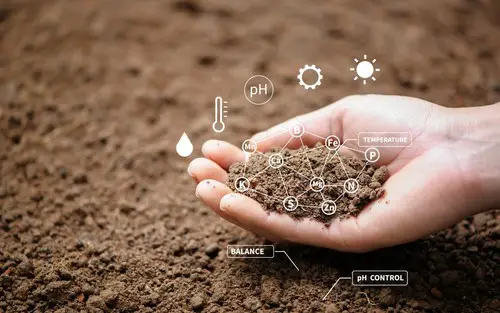
Avocado trees require soil that is rich in nutrients and has good drainage. The soil should be slightly acidic with a pH between 6 and 6.5. Adding compost or other organic matter to the soil can help improve its quality.
3. Watering
Avocado trees should be watered deeply but infrequently. They prefer to be kept slightly dry, so avoid overwatering. During the rainy season, it’s important to make sure the soil is not waterlogged.
4. Fertilization
Avocado trees require regular fertilization to ensure healthy growth and fruit production. A balanced fertilizer with an N-P-K ratio of 8-3-9 is recommended. Fertilizer should be applied every two to three months during the growing season.
5. Photosynthesis
Avocado trees rely on photosynthesis to produce energy for growth and fruit production. They require direct sunlight for at least six hours a day to ensure healthy photosynthesis. If growing indoors, supplemental lighting may be necessary.
6. Crop Management
To ensure a healthy crop, avocado trees should be pruned regularly. Pruning can help control the size and shape of the tree, as well as promote healthy growth and fruit production. It’s important to remove any dead or diseased branches.
Effects on Avocado Fruits
Black spots on avocado leaves can have a significant impact on the fruit yield and quality. The spots are often a sign of fungal infections such as Cercospora spot or Anthracnose, which can spread to the fruit and cause spoilage.
Fungal infections can affect the ripening process of the fruit, causing it to ripen unevenly or prematurely. Overripe fruits may also be more susceptible to spoilage and mold growth, which can further reduce the yield.
Moisture is a critical factor in the development of fungal infections. Fruits that are exposed to high humidity or rainfall are more likely to develop black spots and other fungal diseases. It is crucial to keep the fruit dry and avoid exposing it to moisture to prevent the spread of fungal infections.
Iron deficiency can also contribute to the development of black spots on avocado fruits. Iron is an essential nutrient for healthy fruit development, and a lack of iron can weaken the fruit’s immune system, making it more susceptible to infections.
Once the fruit is harvested, it is essential to handle it carefully to prevent damage that can lead to spoilage. It is also important to refrigerate the fruit to slow down the ripening process and extend its shelf life.
Impact of Insects and Pests
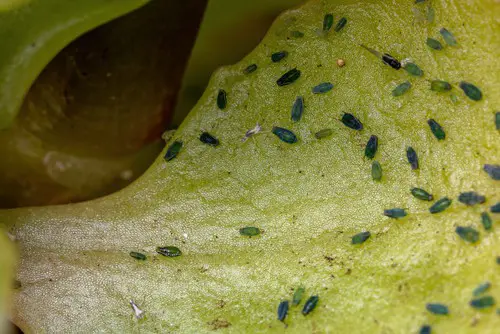
Avocado trees can be affected by various insects and pests, which can cause black spots on the leaves. Here are some of the most common pests that can impact avocado trees:
1. Insects
Borers: Borers are known to tunnel into avocado trees, where they feed or lay eggs. They can cause damage to the tree’s trunk, leading to the development of black spots on the leaves.
Thrips: Thrips are tiny, winged insects that can cause damage to the leaves of the avocado tree. They feed on the sap of the leaves, causing them to turn brown and develop black spots.
2. Mites
Spider mites: Spider mites are difficult to see with the naked eye, but they can cause significant damage to avocado trees. They feed on the sap of the leaves, causing them to turn yellow and develop black spots.
3. Flies
Fruit flies: Fruit flies can lay their eggs on the avocado fruit, causing it to rot and develop black spots. They are attracted to ripe fruit, so it is important to harvest the fruit before it becomes overripe.
4. Control
To control pests and insects that can cause black spots on avocado leaves, it is important to take a proactive approach. Here are some tips on how to control pests:
- Regularly inspect the avocado tree for signs of pests and insects.
- Use insecticides and pesticides that are safe for avocado trees.
- Use natural predators such as ladybugs to control pests.
- Keep the area around the avocado tree clean and free of debris.
Role of the Avocado Grower
Avocado growers play a crucial role in managing black spots on avocado leaves. With experience, growers can identify the early signs of black spots and take appropriate measures to prevent the spread of the disease to other trees.
When a grower identifies black spots on avocado leaves, they should isolate the infected tree immediately. This will prevent the disease from spreading to other trees in the orchard.
The grower should then remove and destroy the infected leaves and fruit. Proper disposal of the infected plant material is crucial to prevent the disease from spreading to other areas.
Composting infected plant material is not recommended, as the fungus that causes black spots can survive in the compost pile and infect other plants when the compost is used. It is important to note that the fungus can also survive on fallen leaves and fruit, so growers should regularly clean up fallen plant material in the orchard.
To prevent the occurrence of black spots, growers should maintain good orchard hygiene, including regular pruning to improve air circulation and reduce humidity. They should also ensure that the trees receive adequate water and nutrients to maintain healthy growth and prevent stress, which can make them more susceptible to diseases.
Frequently Asked Questions
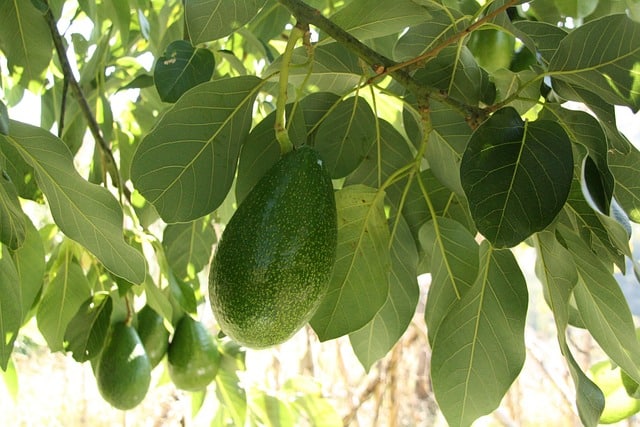
What causes black spots on avocado leaves?
Black spots on avocado leaves are typically caused by fungal infections like cercospora spot or algal leaf spot. These fungi thrive in warm and humid conditions, and can be spread through contaminated soil or water. Insects like blackfly or mites can also cause black spots along the veins of the leaves.
How to treat brown spots on avocado leaves?
To treat brown spots on avocado leaves, it’s important to first identify the cause of the spots. If it’s a fungal infection, you can apply a fungicide to the affected area. If it’s due to insect infestation, an insecticide may be necessary. It’s also important to make sure the avocado tree is receiving proper care, such as adequate water and nutrients.
Are black spots on avocado bad?
While black spots on avocado leaves can be unsightly, they are not necessarily a sign of a serious problem. However, if left untreated, the fungal infection can spread and cause damage to the tree.
How do I get rid of fungus on my avocado plant?
To get rid of fungus on an avocado plant, you can apply a fungicide specifically designed for the type of fungus present. It’s important to follow the instructions carefully and apply the fungicide at the recommended intervals to ensure effectiveness.
Why are my avocado tree leaves turning brown and falling off?
Avocado tree leaves can turn brown and fall off for a variety of reasons, including fungal infections, insect infestations, improper watering or nutrient deficiencies. It’s important to identify the underlying cause and take appropriate action to address the issue.
What are some common avocado diseases?
Some common avocado diseases include anthracnose, avocado root rot, and avocado sunblotch viroid. These diseases can cause damage to the tree and affect fruit production, so it’s important to monitor avocado trees for signs of disease and take appropriate action to prevent and treat infections.

Hey, I’m Lisa and I’ve been an avid gardener for over 30 years. I love writing, talking and living in the garden! Feel free to connect with me on my socials below

